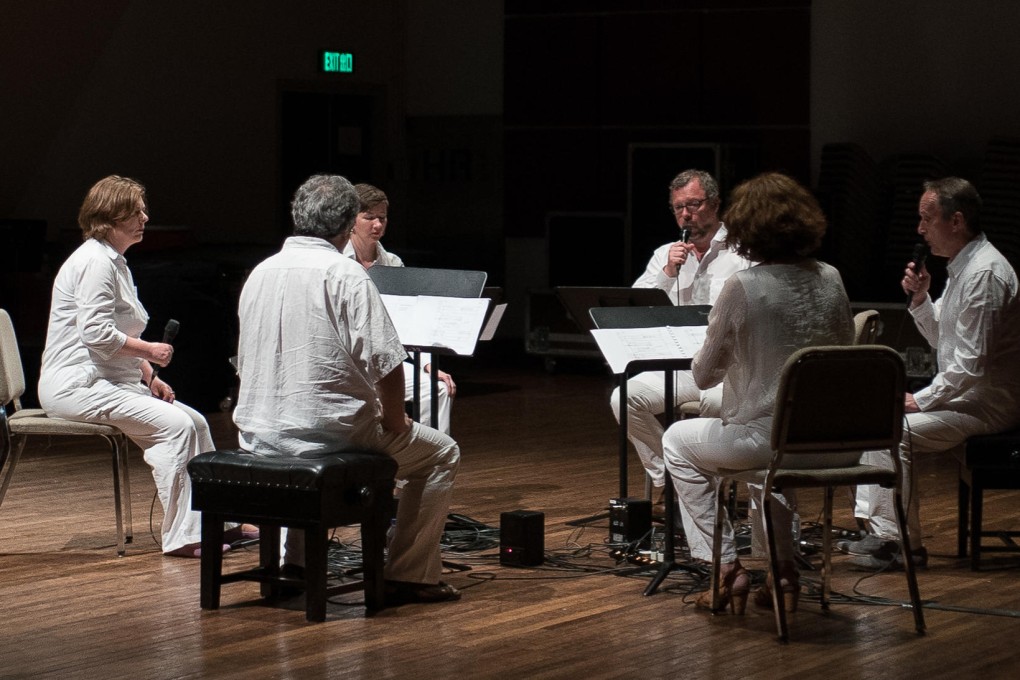Review: concert of nasal drones and tones is both strange and compelling

Listening to Stockhausen's 70-minute plus begets an altered state of mind where time seems to spin in circles. Inspired by his own humming, in this piece the composer explored the possibilities inherent in one low drone and its overtones.
The German word " " has various meanings including "tuning" and "mood". Overtones are natural phenomena - faint high pitches that hover above every sound. Central Asian throat-singers exploit these harmonics, which can be also heard by plucking a guitar string while pressing lightly at the midpoint.
The piece, composed in 1968, has a ritualistic format. The six singers, three men and three women dressed in white, walked onstage one at a time. They sat in a circle, facing inward, bowed their heads, and picked up microphones.
One of the men hummed a low pitch, and by changing the shape of his mouth and throat with different vowels, produced overtones that floated eerily above the drone note. This made a kind of melodic rainbow of pure notes. As other singers were added one at a time, the hamonic arcs rose higher, making it easy to perceive the delicate tones.
The score had 51 sections, each with a lead singer using a set of rhythmic patterns. This structured improvisation required the singers to tune the intricate intervals accurately while watching for cues from their fellow singers. The stamina and control of the singers was extraordinary.
At times they broke into dramatic speech. Sudden words and phrases popped out - "Venus!" "Hallelujah!" "The male is basically an animal". Near the end, the sound was a cluster of whistling overtones.
